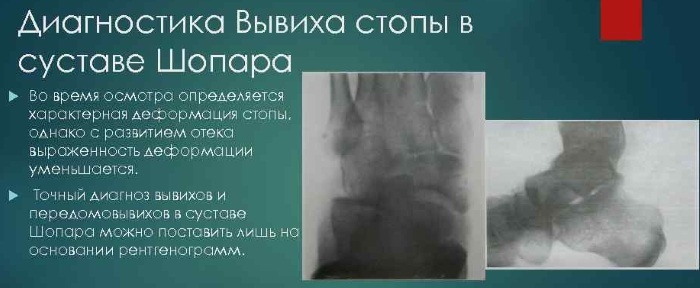Content
- Signs of a heart attack, how to recognize
- How to distinguish a heart attack from angina pectoris?
- First aid for a heart attack
- First aid before the ambulance arrives
- If the patient is unconscious
- With cardiac arrest
- Rules for conducting an indirect heart massage
- Taking nitroglycerin
- First aid for complications
- What should a patient do with a heart attack?
- What is absolutely forbidden to do?
- How important is first aid for a heart attack?
- Video about myocardial infarction
Outcome and auspiciousness prognosis for myocardial infarction are determined by the correctness of the actions of the victim and others. What to do in the event of a sudden onset of acute coronary insufficiency and what is strictly forbidden is indicated in special information sheets for patients.
Signs of a heart attack, how to recognize
The main symptom of a developing cardiac crisis is a sharp and sharp pain in the chest area, which cannot be stopped by analgesic or cardiological drugs. In severe cases, myocardial infarction is manifested by a palpable arrhythmia.
Perhaps a complete cessation or periodic interruption of the contractile activity of the heart muscles.
Common signs of acute coronary syndrome:
- sudden burning pain in the area of the anatomical location of the affected organ;
- blanching of the skin of the face;
- an attack of intense fear or panic;
- the formation of profuse cold and sticky sweat on the forehead;
- anemic condition;
- loss of consciousness;
- paresthesia of the upper limbs;
- muscle weakness;
- coordination violations.
Myocardial infarction (what to do depends on whether the patient is conscious or not) is accompanied by shortness of breath, nausea, dizziness.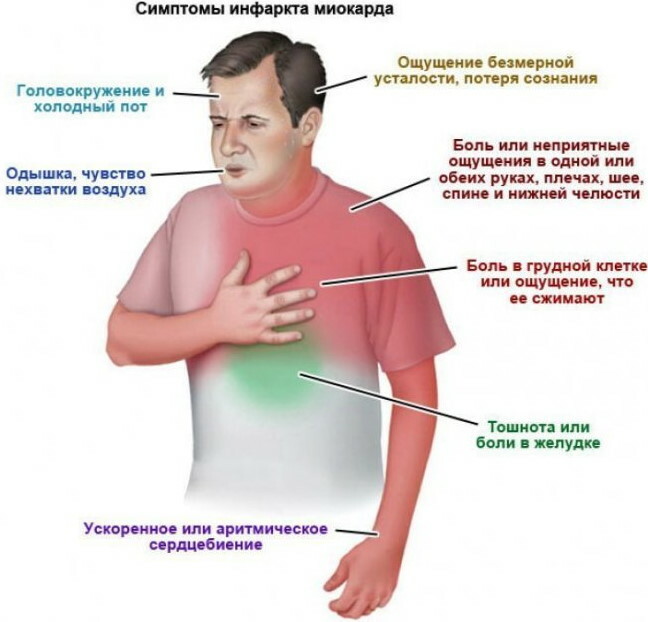
Pain syndrome of a burning character is distinguished by irradiation in:
- cervical region;
- subscapularis;
- lower jaw;
- shoulder girdle;
- one or both hands.
The duration of uncontrolled paroxysm varies from 15 minutes. up to several hours or before the use of resuscitation measures. Some signs are due to a critical drop in blood pressure.
Necrosis of smooth muscle fibers develops, which are responsible for the contractile activity of the organ. As a result of hemodynamic disturbances, the transport of oxygen to the tissues of the heart mechanism slows down.
Signs of acute coronary syndrome are variable and depend on the age of the patient, the presence of concomitant pathologies, a type of myocardial infarction. Sometimes the symptomatology is difficult to recognize due to the non-obviousness of the clinical picture.
Coronary insufficiency can disguise itself as other diseases. This is due to the complexity of the initial differential diagnosis, which only an experienced cardiologist can do.
Typical signs of atypical myocardial infarction, which can be used to recognize or suggest an acute heart attack, are presented in the table.
| A type of coronary syndrome | Complex of symptoms |
| Abdominal |
|
| Asthmatic |
|
| Arrhythmic |
|
| Cerebral |
|
| Collaptoid |
|
| Edematous |
|
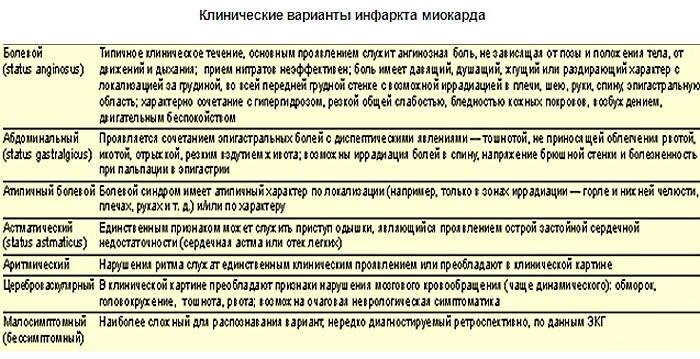 With the combined form of myocardial infarction, the symptomatic complex combines signs of 2 or more varieties. This coronary syndrome is considered rare. Another uncommon type of heart muscle lesion is painless.
With the combined form of myocardial infarction, the symptomatic complex combines signs of 2 or more varieties. This coronary syndrome is considered rare. Another uncommon type of heart muscle lesion is painless.
A similar pathogenesis of a critical condition is typical for patients with diabetes mellitus, autoimmune pathologies. Painless coronary syndrome develops in neurological diseases, decreased sensitivity of the corresponding receptors.
The first signs of a growing crisis in men and women are identical. It is difficult to recognize the disease on your own. Women are more likely to develop atypical variants of heart muscle damage.
How to distinguish a heart attack from angina pectoris?
Differentiation of acute coronary syndrome is important for the provision of first aid to the patient, the choice of rehabilitation measures and subsequent therapy.
Myocardial infarction (what to do with a rapidly developing life-threatening condition depends on the type pathological process and the extent of damage to the heart muscle) symptomatology resembles angina pectoris.
The latter is a type of ischemia and is characterized by periodic hypoxia of the smooth muscles of the organ due to oxygen starvation. Angina pectoris is characterized by a feeling of chest tightness, pain of varying intensity in the localization area.
As with myocardial infarction, paroxysms radiate to numerous areas of the upper body. Painful sensations intensify in moments of strong psychological stress and emotional distress, during physical exertion and hypothermia.
At rest, the symptomatology fades away. Myocardial infarction has similar, but more persistent, prolonged and acute symptoms.
You can distinguish coronary insufficiency from angina pectoris by:
- the duration of painful paroxysms of more than 15-20 minutes;
- unabated symptoms in a state of physiological and psychoemotional rest;
- a change in body position that does not lead to a decrease in burning or pressing sensations;
- little or no reaction to cardiac medications.
Myocardial infarction often occurs in the morning. Extensive lesions of the coronary arteries are characterized by a number of symptoms uncharacteristic of angina pectoris. Distinctive features include respiratory distress, cold sweat on the forehead.
For the initial differential diagnosis, sharply onset muscle weakness, vertigo syndrome, and sudden darkening in the eyes are important. Such clinical symptoms do not accompany angina pectoris.
First aid for a heart attack
If you suspect acute coronary insufficiency, you should immediately call an ambulance. The condition requires urgent hospitalization of the patient. It is necessary to open the windows in the room to ensure the flow of fresh air.
With myocardial infarction, the heart muscle experiences acute oxygen starvation. When calling the ambulance team, it is necessary to explain in detail the observed symptoms to the dispatcher, to describe the existing signs of a critical condition.
If the patient is conscious, you need to help him to take a semi-sitting position on the bed, placing a pillow under his head. Before the ambulance arrives, you can measure your blood pressure.
The severity of the condition is determined by the extent to which the coronary arteries are blocked by a thrombus. With occlusion (complete blockage of blood lumens), the pathological process is especially critical.
Irreversible necrotic changes in cardiac tissues and organic structures begin in 20-40 minutes.
Primary pre-medical measures are performed for:
- reducing the hemodynamic load on the organ;
- elimination or relief of a hypoxic state;
- expansion of the lumen of the coronary arteries;
- stabilization of blood pressure.
Correctly performed primary resuscitation procedures before the arrival of an ambulance increases the patient's chances of life. It is important to partially stop the pain syndrome, to limit the area of necrotic lesions of cardiac tissue.
First aid before the ambulance arrives
At the first symptoms of the patient's critical condition, any physical activity should be immediately excluded, a favorable atmosphere should be created in the room by intensive air renewal.
The most dangerous stage of the coronary syndrome is 5-10 minutes. after it started. It is important to stabilize the psychoemotional state of the victim. Providing high-quality ventilation of air in the room is aimed at saturating the atmospheric mixture with oxygen, cleaning it from dust particles, allergens, and pathogenic bacteria.
What to do with the sudden development of acute coronary syndrome, the consultant of the ambulance station will tell you while the intensive care team is on the way. Myocardial infarction is characterized by vasoconstriction - a strong narrowing of the blood vessels of the organ.
Before the arrival of the ambulance, they can be expanded with medication. To stimulate cardiac activity, a special massage procedure is used that does not require proficiency in specialized skills.
If the patient is unconscious
If the victim does not react to a loud hail or other external stimuli, it is better to leave him in his original position. It is strictly forbidden to turn the body over and use physical force when the patient is unconscious.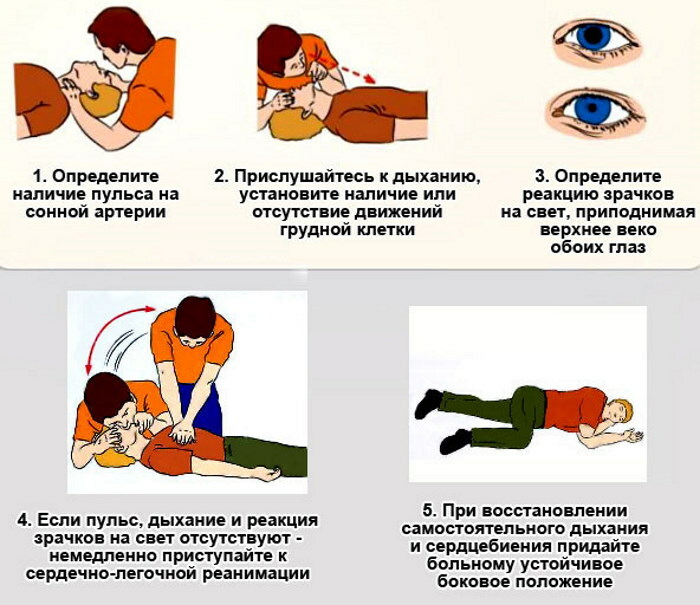
An exception is indirect heart massage. It is necessary to control the blood pulsation on the wrist or on the neck under the lower jaw. The heart rate should be checked, which indicates the severity of the clinical picture.
The lack of respiratory activity indicates the termination of the blood circulation process. In case of loss of consciousness, it is permissible for the victim to lay him on his back with maximum accuracy, ensuring the elevation of the upper body above the lower.
The head needs to be tilted back a little, the legs should be raised and bent at the knee joints. This position of the body improves hemodynamics. When respiratory activity stops, the patient's mouth should be gently opened to widen the upper respiratory tract.
Violation of the function of drawing in atmospheric air is considered an indication for pre-medical pulmonary-cardiac stimulation. Within 1-2 minutes. perform an indirect massage of the affected organ in combination with artificial respiration.
With cardiac arrest
The complete cessation of the work of the cardiac mechanism with the absence of bioelectric activity is characterized by the general clinical picture, which includes fibrillation and asystole of the ventricular divisions.
The condition is characteristic of an acutely developing syndrome of coronary insufficiency. To save lives, before the arrival of the resuscitation team, pulmonary-cardiac stimulation is used. You need to act quickly. There are no more than 3-5 minutes in stock. before the onset of irreversible changes in the cerebral zone and tissues of the organ affected by the heart attack.
Rules for conducting an indirect heart massage
The technique provides for a compressive effect on the patient's chest. It is forbidden to perform closed heart massage with pulse activity.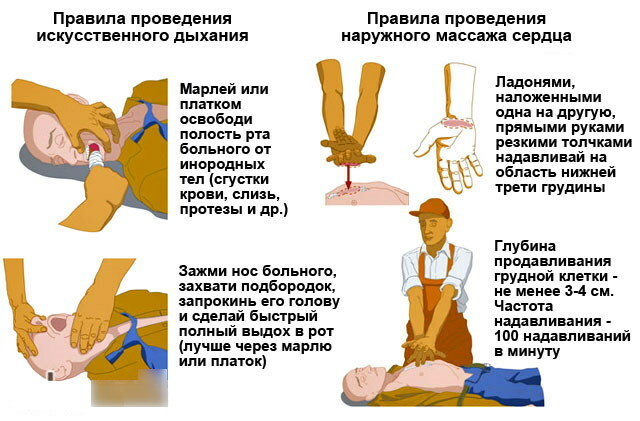
Algorithm of actions:
- Place the victim on a firm surface. The patient should be on his back. On a bed or other sagging surface, you cannot massage the chest.
- Determine the anatomical position of the xiphoid process in the patient's body. The bone structure is the narrowest part of the chest and serves as its lower extremity. The xiphoid process is easily felt through the skin.
- Measure 20-40 mm upwards from the detected anatomical formation. The area will become the point of compression.
- Close your own hands with a lock and place them over the lower third of the chest of the unconscious patient.
- Press rhythmically on the massaged area. The approximate punching depth is 3-4 cm.
- After each massage movement, wait for the chest to return to its natural anatomical position.
An elementary resuscitation procedure requires a high speed - up to 100-110 pressures per minute. When performing a closed heart massage, the thumbs of the rescuer should be directed towards the patient's chin or abdomen.
Myocardial infarction (what to do in case of loss of consciousness is detailed in special information bulletins for patients) requires cardiac stimulation while maintaining a right angle between the hands of the resuscitator and the body victim.
If pulmonary stimulation is performed simultaneously with the massage, every 2 breaths are alternated with 30 rhythmic chest thrusts. If signs of cardiac activity appear, respiration and pulse activity resume, the procedure should be stopped and wait for the arrival of doctors.
Taking nitroglycerin
The pharmacological action of the drug is aimed at expanding the arterial lumen. Nitroglycerin has pronounced antianginal and coronary dilating properties.
The drug in tablet form is taken sublingually - put under the tongue. The recommended dosage for acute coronary insufficiency is 500 μg of the active ingredient, which is glycerol trinitrate.
The pill is taken when the first symptoms of myocardial infarction are detected. With a rapid increase in the signs of coronary syndrome after 5-10 minutes. you can use one more unit of the drug.
The maximum dosage is 3 tablets with the indicated time interval between doses. An alternative to Nitroglycerin is Isoket in the form of an aerosol spray. It is effective when the patient loses consciousness while maintaining respiratory activity.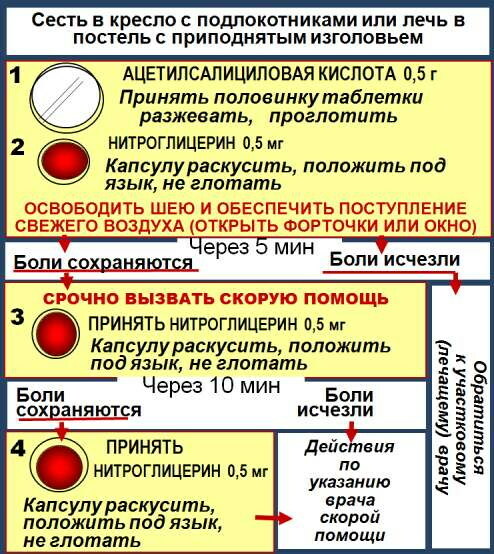
Nitroglycerin should not be used when blood pressure is critically low. In such a situation, the drug can provoke a cardiac collapse. To stabilize the patient's psychoemotional state, Nitroglycerin is supplemented with sedative drugs.
For myocardial infarction, valerian or motherwort tincture is suitable. Use Valocardin or Barboval in the form of oral drops intended for mixing with drinking water.
To reduce the density of blood, taking Nitroglycerin is combined with the use of Aspirin Cardio - a non-steroidal anti-inflammatory drug with antiaggregatory, analgesic, thermoregulatory properties.
First aid for complications
Perceptible negative physiological manifestations, characteristic of myocardial infarction, are expressed by an increase in respiratory activity, a noticeable dilation of the pupils, and throat rales.
Atypical forms of acute coronary syndrome have their own set of life-threatening complications. The condition often provokes functional disorders in other systems of the body - digestive, hepatobiliary, urinary.
Such complications are caused by a deficiency of blood supply and the resulting hypoxia.
Acute coronary insufficiency syndrome is often recognized by:
- pale or bluish tinge of the skin;
- rapidly developing signs of neurological disorders;
- confusion of consciousness;
- peripheral edema.
First aid consists in the use of vasodilators, sedatives and antiplatelet drugs. Before the arrival of an ambulance, it is necessary to control the physiological parameters of the body, if necessary, to stimulate cardiopulmonary activity.
What should a patient do with a heart attack?
If the attack is caught at a time when it is impossible to get help from others, it is important to remain calm. You can carry out certain measures aimed at reducing the severity of the pathological process yourself. You need to immediately call the resuscitation team, leaving the front door open.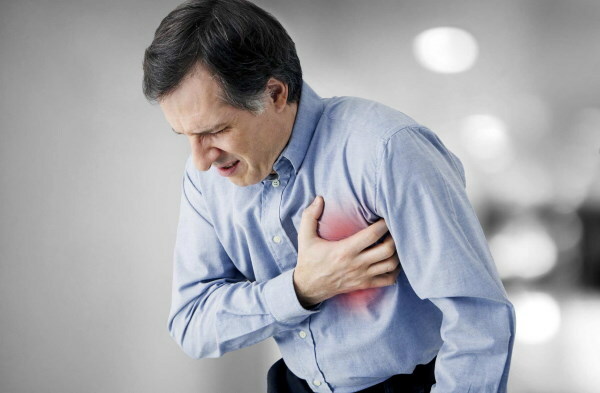
It is necessary to ensure the flow of fresh atmospheric mixture into the room. The air conditioning system can be turned on at full capacity, if there is one. It is important to put a Nitroglycerin tablet under the tongue when the first symptoms of coronary syndrome are detected.
Myocardial infarction (what to do next depends on the current state and the ability to take active actions) in most cases, with timely medical care, has a favorable Exodus.
You need to lie down so that your head is on the dais. The legs should be bent at the knees. This position of the body facilitates the blood supply to the organ affected by the pathological process of vital internal functional systems and avoids numerous severe complications.
What is absolutely forbidden to do?
It is forbidden to try to independently restore the work of the heart or reduce pain by intensively massaging the chest area. It is strictly forbidden to drive a car in the hope of getting to the nearest medical institution.
Any physical exertion and emotional stress should be avoided. Do not rinse your face with cold water, take a shower, or expose your body to other temperature influences.
It is forbidden to consume food and any medications, except for first aid medications. If you have a heart attack, you are strongly advised to refrain from smoking. Nicotine has a pronounced ability to narrow the vascular lumen. Cigarette smoke puts excessive stress on the respiratory system.
How important is first aid for a heart attack?
According to official WHO statistics, about half of all deaths provoked by acute lesions of the coronary arteries of the heart occur within 1.5-2 hours. after the onset of the attack. A significant proportion of patients do not live to see the arrival of the intensive care team.
Symptoms in myocardial infarction are characterized by rapid progression. Symptoms of acute coronary syndrome develop extremely rapidly and aggressively. It is the first aid that allows you to significantly improve the prognosis and avoid extensive necrotization of the organic structures of the affected organ.
Early cardiopulmonary resuscitation in myocardial infarction and the use of Nitroglycerin in combination with a decrease in the negative effect provoking factors and with the exception of what is strictly forbidden to do, can save lives even in the most difficult clinical situations.
Video about myocardial infarction
Myocardial infarction: causes, symptoms and treatment:


